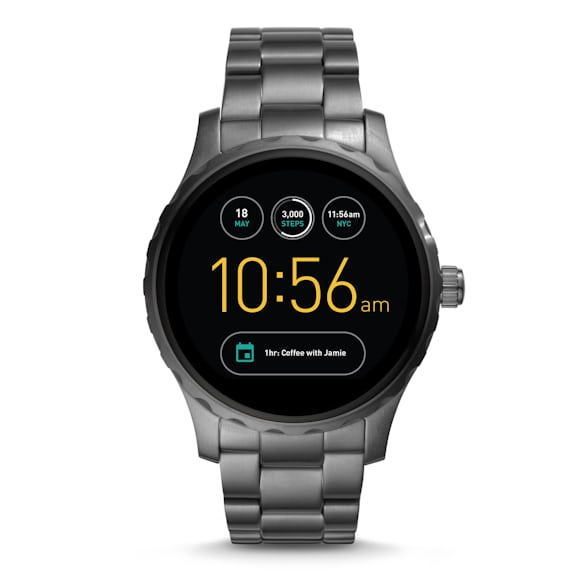Business News: Fossil Is Rolling Out Android Wear 2.0 To All Of Its Touchscreen Smartwatches On March 15
” width=”540″/>
Fossil is serious about the smartwatch market. From the company’s acquisition of wearables maker Misfit back in 2015 to its recent announcement that it would double smartwatch production in 2017, it’s been scaling up for some time now. Today the company makes its next big move, committing to take all of its touchscreen smartwatches, past and present, to the new Android Wear 2.0 operating system.
On March 15, Fossil will start rolling out the new OS to all three of its current touchscreen smartwatch collections, the Q Wander, Q Marshal, and Q Founder. It’s worth clarifying here that this announcement covers Fossil Brand, not Fossil Group. The former is the company you think of when I say “Fossil,” while the latter is the parent company, comprised of 19 brands including Fossil, Misfit, Skagen, Zodiac, and a few licensed fashion watch brands. We’ll almost certainly be seeing Android Wear 2.0 on smartwatches from the other Group brands, but no timeline has been confirmed for that rollout.
Android Wear 2.0 was first released just a month ago on a pair of LG smartwatches designed in collaboration with Google. It offers a number of new features, some big and some small. Both onboard LTE connections and Android Pay are now supported (two oft-requested features from users, unsurprisingly), and there is also much richer fitness tracking support through Google Fit. Right up front you’ll also notice differences, with many more customization options for watch faces, including new integrations of app widgets directly into the faces themselves. Overall the experience is more customizable, offers more potential independence from your phone, and brings much-needed connectivity and payment options into the mix.

The biggest addition to the platform though is the Google Assistant. This is the company’s virtual assistant (as you could probably tell from the name) and it’s already in a few Android smartphones, notably the Google Pixel, as well as the Google Home device. This is arguably the most interesting technology to come out of Google in years and it looks like it’s also Google’s vision for the future of mobile communication and device interaction – so having it on your wrist is a big step for the platform.
While all of these features will likely enhance the overall user experience, the real question is what …read more






